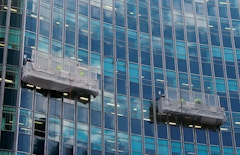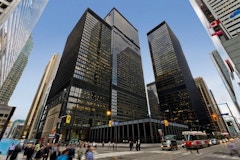
128 results
-

-

World Congress 2024 News: Technoform elevates to platinum sponsorship!
- Article by Val Block, Consultant to FTI
-
In pursuit of nothing: Leveraging the facade system for net-zero-carbon
- Article by Rodrigo Borghino, Partner
-

-
-

Deep green skins: Façade assembly design for adaptive capacity, durability, and disassembly
- Article by Mic Patterson PhD
The façade system is a potent potential lever for bringing transformative change to buildings and urban habitat in the pursuit of carbon reduction and net zero carbon goals. Nothing in architecture combines attributes of appearance and performance as does the building façade.
-

Design & Preservation Resource Roundup!
A collection of available public assets to assist in your resilient and sustainable building design and delivery.
-

Appropriate Repair and Retrofit for Carbon Reductions: OSCAR
- Article by Cory Rouillard, AIA, APT RP, LEED AP, Senior Associate
-

Exploring Heritage: Building on the Past
- Article by Mic Patterson
Welcome to this edition of the SKINS newsletter, which is all about carbon! As guest editor this month, I am representing FTI’s embodied carbon (EC) working group. This issue highlights several important topics relative to embodied and the trade-offs with operational carbon.
-

Leveraging Avoided Emissions Through Retrofit and Reuse: the CARE Tool
- Article by Lori Ferriss, AIA, PE, LEED AP BD+C
-

Guidelines for the Treatment of Aging Composite Materials and Assemblies
- Article by Caroline Alderson, FAPT
-

A Break From The Past: How the Guggenheim Renovation Made Thermally Broken Steel Windows a New Normal
- Article by Angel Ayón, AIA, NCARB, NOMA, LEED AP, Principal
-

-

Repainting the Existing Curtain Wall at Toronto Dominion Centre
- Article by Adrienne Cressman · Melissa Patterson · Michael McClelland · Liisa Morley
-

Stop Relying on Myths – Energy Efficient and Durable Heritage Building Enclosures
- Article by David Kayll, FMA, P.Eng, President and senior building science specialist
-

Building Rehab/Reuse, Decarbonization and Modern-Era Precast Facades
- Article by Mark Thompson Brandt, OAA, RAIC, FAPT-RP, LEED AP, CAHP,, Founding Partner
-

-

Focus on carbon: Unlocking embodied carbon reductions in facade systems
- Article by FTI Embodied Carbon Working Group
-

Embodied Carbon
- Article by Helen Sanders
Welcome to this edition of the SKINS newsletter, which is all about carbon! As guest editor this month, I am representing FTI’s embodied carbon (EC) working group. This issue highlights several important topics relative to embodied and the trade-offs with operational carbon.
-
